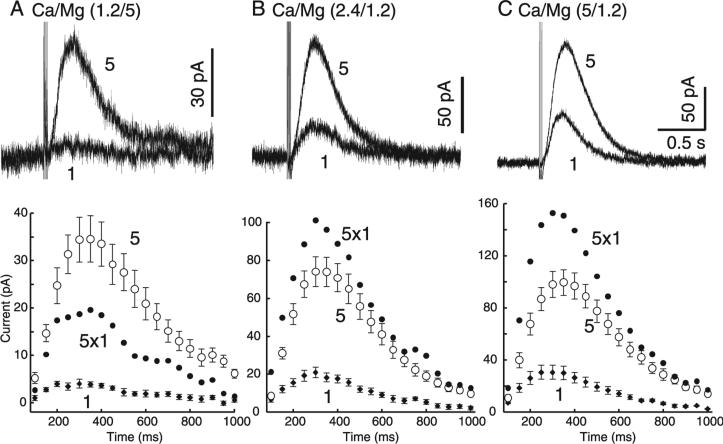Fig. 7.
Facilitation of dopamine release was demonstrated by lowering release probability. Extracellular calcium and magnesium concentrations were altered to manipulate release probability (PR): (A) low PR (1.2 mm Ca, 5 mm Mg), (B) control PR (2.4 mm Ca, 1.2 mm Mg) and (C) high PR (5 mm Ca, 1.2 mm Mg). Dopamine IPSCs were evoked with single stimuli or trains of five rapid (10 ms interval) stimuli. (A, top) When PR was low, one stimulus produced very little current while five stimuli still produced a substantial IPSC. If the current produced by a single stimulus (‘1’) was constant over the next four stimuli, the IPSC would be the amplitude and time course predicted by the closed circles labelled ‘5 × 1’. (A, bottom, ‘5’) This predicted IPSC is smaller than the measured IPSC evoked by five stimuli. (B and C, bottom) When PR was increased the predicted IPSC ‘5 × 1’ was larger than the measured IPSC evoked by five stimuli, suggesting that facilitation of dopamine release occurred only when PR was low (n = 7–9). Total charged passed by one vs. five stimuli: low PR, 8.8 ± 1.6%; normal PR, 27.6 ± 2.3%; high PR, 28.8 ± 2.9%; n = 7–9.

